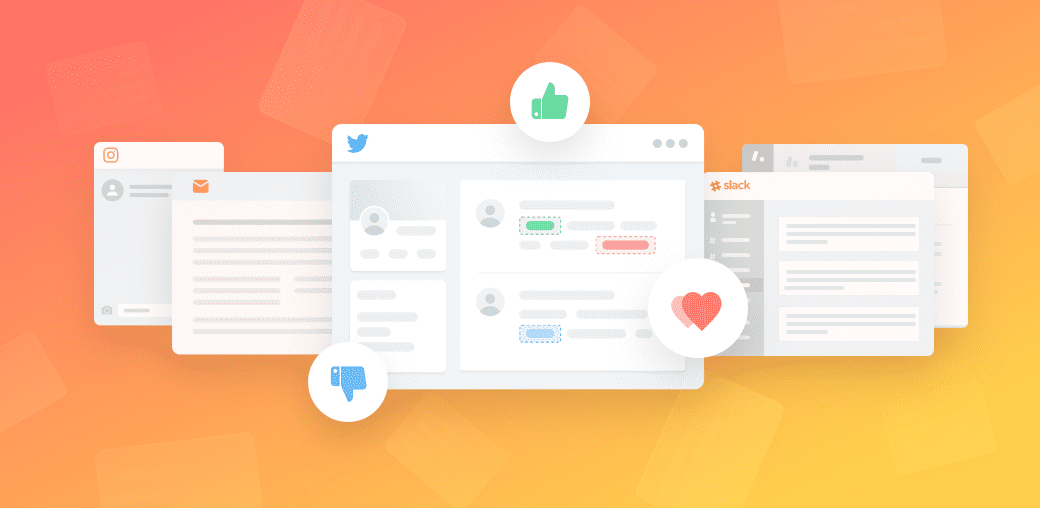In the dynamic landscape of the digital age, understanding and interpreting human emotions have become paramount. Sentiment analysis, a groundbreaking technology, has emerged as a powerful tool for deciphering and analyzing the sentiments expressed in various forms of text data. Let’s explore the multifaceted sentiment analysis applications across different industries.
Business Intelligence
In the realm of business intelligence, sentiment analysis plays a crucial role in understanding customer feedback. Businesses gain valuable insights into customer satisfaction by analyzing sentiments in reviews and comments, enabling them to make data-driven decisions. Moreover, it enhances market research, providing a deeper understanding of consumer preferences and trends.
Social Media Monitoring
Social media has become a hub for expressing opinions and sentiments. Sentiment analysis tools enable companies to monitor public perception of their brand in real-time. This not only aids in brand reputation management but also allows for proactive measures to be taken in response to emerging trends or issues.
Customer Service Improvement
Real-time feedback analysis through sentiment analysis tools allows businesses to address customer concerns promptly, leading to improved customer service. Understanding the sentiments behind customer interactions helps in tailoring services and products to meet customer expectations, ultimately enhancing the overall customer experience.
Politics and Public Opinion
In the political arena, sentiment analysis is employed to gauge public opinion on various issues. During election campaigns, candidates utilize sentiment analysis to understand the sentiments expressed on social media platforms, helping them fine-tune their strategies. Governments also leverage sentiment analysis to analyze public feedback on policies and initiatives.
Entertainment Industry
Sentiment analysis has found its way into the entertainment industry, where it aids in predicting the success of movies and TV shows. By analyzing audience reactions and sentiments, entertainment companies can adjust marketing strategies and content creation to maximize engagement and success.
Healthcare Sector
In the healthcare sector, sentiment analysis is used to analyze patient feedback, helping healthcare providers enhance the quality of care. It is also applied in mental health monitoring, where analyzing sentiments in online discussions can contribute to early detection and intervention.
Financial Market Predictions
Sentiment analysis has proven valuable in predicting trends in financial markets. By analyzing sentiments expressed in news articles, social media, and financial reports, investors can make informed decisions, and businesses can adjust strategies based on market sentiments.
Challenges in Sentiment Analysis Applications
While sentiment analysis offers immense benefits, challenges persist. Accuracy concerns and the need to account for cultural and contextual nuances present hurdles that researchers and developers are actively working to overcome.
Future Trends
The future of sentiment analysis holds exciting possibilities. Advancements in technology, particularly in the realms of artificial intelligence and machine learning, promise more accurate and nuanced sentiment analysis. Integrating sentiment analysis with other emerging technologies is expected to enhance its capabilities further.
Importance in E-commerce
E-commerce platforms utilize sentiment analysis to gain insights from product reviews and ratings. Understanding customer sentiments allows for personalized shopping experiences, contributing to customer satisfaction and loyalty.
Sentiment Analysis Tools
Several tools dominate the sentiment analysis landscape, each offering unique features and capabilities. From sentiment scoring to emotion analysis, these tools empower businesses across industries to harness the power of sentiment analysis.
Ethical Considerations
As with any technology, ethical considerations surround sentiment analysis. Privacy concerns and responsible AI usage are critical aspects that need careful attention to ensure the ethical application of sentiment analysis in various domains.
Conclusion
In conclusion, sentiment analysis applications have become an indispensable tool in navigating the complexities of the digital age. Its applications span across industries, influencing decision-making processes and enhancing user experiences. As technology continues to evolve, so too will the capabilities of sentiment analysis, shaping a future where decoding emotions in the digital realm becomes even more sophisticated.
Ready to unlock the power of sentiment analysis for your business? Request a demo from AIM Technologies today and discover how our cutting-edge solutions can elevate your decision-making processes and enhance customer experiences.
FAQs
What is sentiment analysis?
- Sentiment analysis, also known as opinion mining, is a process of determining and analyzing emotions expressed in text data to understand the sentiment or opinion conveyed.
How accurate is sentiment analysis?
- While advancements have improved accuracy, challenges such as context and cultural nuances may affect precision. It’s essential to choose reliable tools and continually refine models.
What industries benefit most from sentiment analysis?
- Industries such as business, healthcare, finance, and entertainment leverage sentiment analysis to gain insights into customer sentiments, market trends, and public opinions.
Are there privacy concerns with sentiment analysis?
- Yes, privacy concerns arise as sentiment analysis involves analyzing personal opinions and expressions. Businesses must handle data responsibly and ethically.
How can businesses implement sentiment analysis effectively?
- Businesses can implement sentiment analysis by choosing suitable tools, setting clear objectives, and integrating them into their decision-making processes. Regularly updating models is also key to maintaining accuracy.





